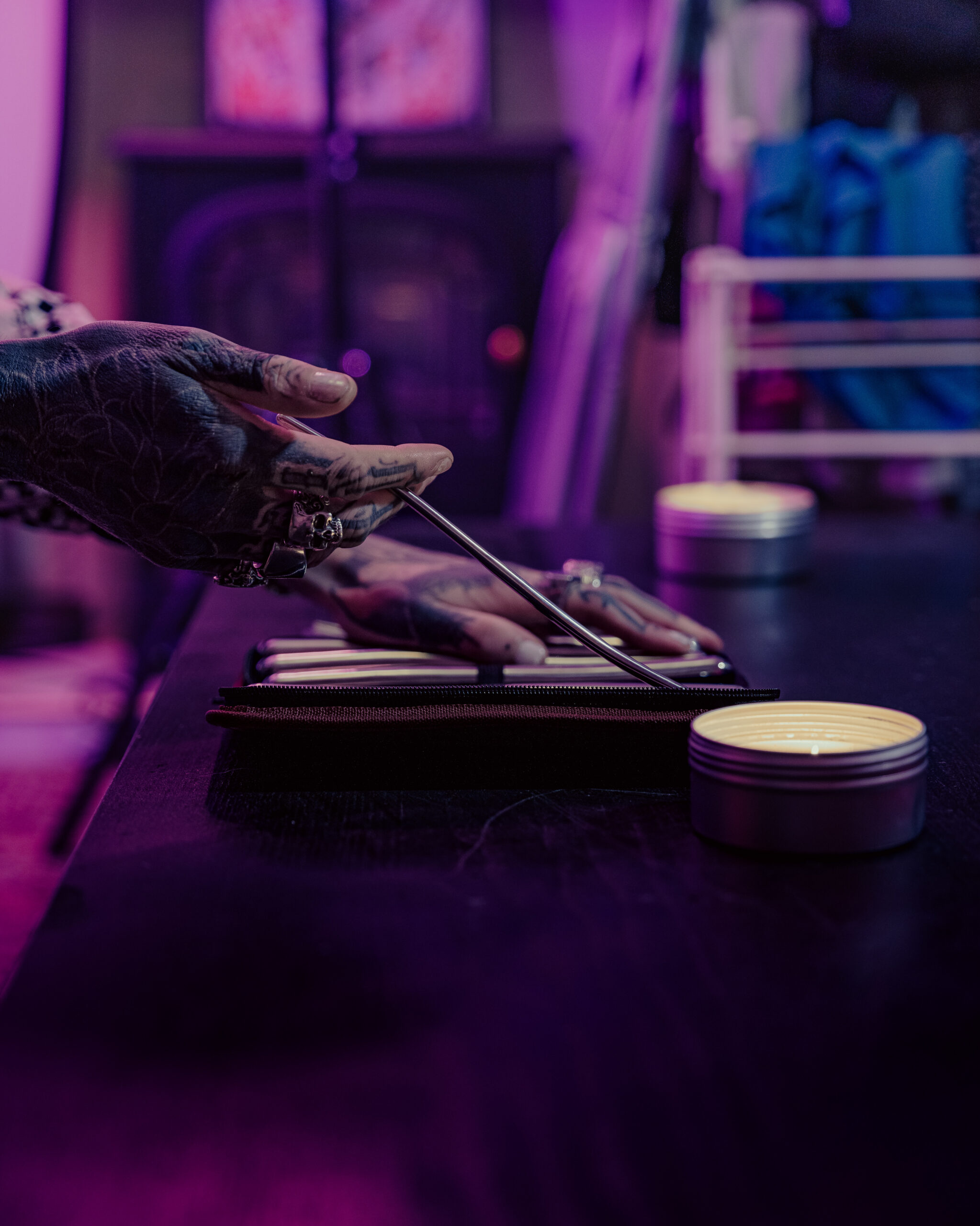Myth 1: Asexuality is a choice
One persistent myth surrounding asexuality is that it is a choice. This misconception stems from a misunderstanding of what asexuality truly means.
Definition of Asexuality
Asexuality is not a choice; it is a sexual orientation characterized by a lack of sexual attraction to others. It’s an inherent aspect of someone’s identity, just like heterosexuality or homosexuality.
Individuals who identify as asexual do not experience the desire for sexual activity or relationships. This does not mean they are unable to form romantic relationships or experience other forms of intimacy, as many asexual people do have fulfilling romantic lives.
It’s crucial to remember that asexuality is a valid and natural variation in human sexuality, deserving of respect and understanding.
Biological and Psychological Factors
This myth likely arises from societal expectations around sex and relationships. Many cultures place a high emphasis on sexual activity as a defining aspect of adulthood and fulfillment. When individuals don’t conform to these norms, it can be challenging for others to understand their experiences.
Scientific research supports the understanding that asexuality is not a choice. Studies suggest that biological and psychological factors contribute to sexual orientation. Research indicates that genetics, hormones, and brain structure may play a role in shaping an individual’s sexual attractions.
Just as people are born with different eye colors or personalities, they are also born with different sexual orientations. Asexuality is a natural variation in human sexuality and should be recognized and respected as such.
No Pressure from Society or Others
Asexuality is not a choice; it is a fundamental aspect of a person’s identity like any other sexual orientation. It involves a lack of sexual attraction to others, which doesn’t mean asexual individuals are incapable of forming romantic relationships or experiencing intimacy.
The misconception that asexuality is a choice likely stems from societal pressures and expectations surrounding sex and relationships. Many cultures emphasize sexual activity as a crucial part of adulthood, leading some to assume those who don’t conform must be choosing to abstain. However, scientific research indicates that sexual orientation, including asexuality, is influenced by biological and psychological factors such as genetics, hormones, and brain structure. Just as individuals are born with diverse physical traits, they are also born with different sexual orientations, making asexuality a natural variation in human sexuality.
Myth 2: All asexual people are celibate
Another common misconception about asexuality is the belief that all asexual people are celibate.
Spectrum of Asexual Experiences
This myth stems from a lack of understanding about the diverse experiences within the asexual community.
- Many asexual individuals choose to engage in sexual activity, often with their romantic partners.
- Some asexual individuals may be sexually active with others for reasons unrelated to sexual attraction, such as emotional connection or experimentation.
- Others may be celibate due to personal preferences or circumstances, independent of their asexuality.
It’s important to recognize that sexuality is fluid and personal. Asexual individuals, like all people, have individual choices and experiences when it comes to intimacy and sexual expression.
Romantic Attraction vs. Sexual Attraction
Another common misconception about asexuality is the belief that all asexual people are celibate.
This myth stems from a lack of understanding about the diverse experiences within the asexual community.
- Many asexual individuals choose to engage in sexual activity, often with their romantic partners.
- Some asexual individuals may be sexually active with others for reasons unrelated to sexual attraction, such as emotional connection or experimentation.
- Others may be celibate due to personal preferences or circumstances, independent of their asexuality.
It’s important to recognize that sexuality is fluid and personal. Asexual individuals, like all people, have individual choices and experiences when it comes to intimacy and sexual expression.
A key distinction to understand is the difference between sexual attraction and romantic attraction.
- Sexual attraction refers to a desire for physical intimacy with another person.
- Romantic attraction involves a desire for emotional closeness, companionship, and potentially a committed relationship.

Asexual individuals may experience romantic attraction without sexual attraction. This means they can be interested in forming close, loving relationships but don’t desire sexual activity as part of that relationship.
Fluid Nature of Identities
Another common misconception about asexuality is the belief that all asexual people are celibate.
This myth stems from a lack of understanding about the diverse experiences within the asexual community.
- Many asexual individuals choose to engage in sexual activity, often with their romantic partners.
- Some asexual individuals may be sexually active with others for reasons unrelated to sexual attraction, such as emotional connection or experimentation.
- Others may be celibate due to personal preferences or circumstances, independent of their asexuality.
It’s important to recognize that sexuality is fluid and personal. Asexual individuals, like all people, have individual choices and experiences when it comes to intimacy and sexual expression.
Myth 3: Asexual people can’t experience pleasure
A common myth surrounding asexuality is the belief that asexual people cannot experience pleasure. This misconception stems from a misunderstanding of what asexuality means.
Different Ways to Experience Pleasure
Asexuality does not equate to an inability to experience pleasure. Asexual individuals can and do experience pleasure in many ways, just as anyone else.
Pleasure is multifaceted and can be derived from various sources, including physical touch, emotional connection, intellectual stimulation, creative pursuits, and sensory experiences.
While sexual activity may not be a source of pleasure for asexual people, they can still find joy and satisfaction in other forms of intimacy, such as cuddling, kissing, holding hands, or engaging in deep conversations.
It’s important to remember that everyone experiences pleasure differently. Asexuality simply means a lack of sexual attraction, not an absence of capacity for pleasure.
Physical and Emotional Intimacy
A common myth surrounding asexuality is the belief that asexual people cannot experience pleasure. This misconception stems from a misunderstanding of what asexuality means.
Asexuality does not equate to an inability to experience pleasure. Asexual individuals can and do experience pleasure in many ways, just as anyone else.
Pleasure is multifaceted and can be derived from various sources, including physical touch, emotional connection, intellectual stimulation, creative pursuits, and sensory experiences.
While sexual activity may not be a source of pleasure for asexual people, they can still find joy and satisfaction in other forms of intimacy, such as cuddling, kissing, holding hands, or engaging in deep conversations.

It’s important to remember that everyone experiences pleasure differently. Asexuality simply means a lack of sexual attraction, not an absence of capacity for pleasure.
Diversity in Physical Reactions
A common myth surrounding asexuality is the belief that asexual people cannot experience pleasure. This misconception stems from a misunderstanding of what asexuality means.
Asexuality does not equate to an inability to experience pleasure. Asexual individuals can and do experience pleasure in many ways, just as anyone else.
Pleasure is multifaceted and can be derived from various sources, including physical touch, emotional connection, intellectual stimulation, creative pursuits, and sensory experiences.
While sexual activity may not be a source of pleasure for asexual people, they can still find joy and satisfaction in other forms of intimacy, such as cuddling, kissing, holding hands, or engaging in deep conversations.
It’s important to remember that everyone experiences pleasure differently. Asexuality simply means a lack of sexual attraction, not an absence of capacity for pleasure.
Myth 4: Asexuality is a phase or something that will change
Another common misconception about asexuality is the belief that asexual people are going through a phase or will eventually change their orientation. This myth often stems from societal expectations and a lack of understanding about the complexities of human sexuality.
Long-Term Studies on Asexuality
Asexuality is not a phase, nor is it something someone “grows out of.” Research indicates that sexual orientation, including asexuality, is a deeply ingrained aspect of a person’s identity.
It develops early in life and remains stable over time.
Similar to other orientations, such as homosexuality or heterosexuality, asexuality is a fundamental part of an individual’s being.
The idea that asexual individuals will eventually become “straight” or develop sexual attraction is rooted in harmful stereotypes and a misunderstanding of how sexuality functions.
It’s crucial to respect people’s self-identified sexual orientations, recognizing them as valid and enduring aspects of who they are.
Fluidity of Sexual Orientations
Another common misconception about asexuality is the belief that asexual people are going through a phase or will eventually change their orientation. This myth often stems from societal expectations and a lack of understanding about the complexities of human sexuality.
Asexuality is not a phase, nor is it something someone “grows out of.” Research indicates that sexual orientation, including asexuality, is a deeply ingrained aspect of a person’s identity.
- It develops early in life and remains stable over time.
- Similar to other orientations, such as homosexuality or heterosexuality, asexuality is a fundamental part of an individual’s being.
- The idea that asexual individuals will eventually become “straight” or develop sexual attraction is rooted in harmful stereotypes and a misunderstanding of how sexuality functions.
It’s crucial to respect people’s self-identified sexual orientations, recognizing them as valid and enduring aspects of who they are.
Acceptance and Self-Discovery
A common misconception about asexuality is that asexual individuals are going through a phase or will eventually change their orientation.
This myth often stems from societal expectations and a lack of understanding about the complexities of human sexuality.
Asexuality is not a phase, nor is it something someone “grows out of.” Research indicates that sexual orientation, including asexuality, is a deeply ingrained aspect of a person’s identity. It develops early in life and remains stable over time. Similar to other orientations, such as homosexuality or heterosexuality, asexuality is a fundamental part of an individual’s being.
The idea that asexual individuals will eventually become “straight” or develop sexual attraction is rooted in harmful stereotypes and a misunderstanding of how sexuality functions.
It’s crucial to respect people’s self-identified sexual orientations, recognizing them as valid and enduring aspects of who they are.
Myth 5: There are only two genders for asexual people
Another persistent myth surrounding asexuality is that there are only two genders for asexual people.
This misconception reflects a limited understanding of gender identity and its relationship to sexual orientation.
Asexuality is an umbrella term encompassing individuals who do not experience sexual attraction. Gender identity, on the other hand, refers to one’s internal sense of being male, female, a blend of both, or neither.
These two aspects are distinct and independent of each other.
Just as heterosexual people can be any gender, so too can asexual people.

Asexual individuals identify across the entire spectrum of gender identities, including male, female, non-binary, transgender, and more. It’s important to recognize and respect the diverse gender expressions within the asexual community.
Asexuality Across Gender Identities
Another persistent myth surrounding asexuality is that there are only two genders for asexual people.
This misconception reflects a limited understanding of gender identity and its relationship to sexual orientation.
Asexuality is an umbrella term encompassing individuals who do not experience sexual attraction. Gender identity, on the other hand, refers to one’s internal sense of being male, female, a blend of both, or neither.
These two aspects are distinct and independent of each other.
Just as heterosexual people can be any gender, so too can asexual people.
Asexual individuals identify across the entire spectrum of gender identities, including male, female, non-binary, transgender, and more. It’s important to recognize and respect the diverse gender expressions within the asexual community.
Intersectionality with other identities
Another persistent myth surrounding asexuality is that there are only two genders for asexual people. This misconception reflects a limited understanding of gender identity and its relationship to sexual orientation. Asexuality is an umbrella term encompassing individuals who do not experience sexual attraction. Gender identity, on the other hand, refers to one’s internal sense of being male, female, a blend of both, or neither. These two aspects are distinct and independent of each other. Just as heterosexual people can be any gender, so too can asexual people. Asexual individuals identify across the entire spectrum of gender identities, including male, female, non-binary, transgender, and more. It’s important to recognize and respect the diverse gender expressions within the asexual community.
Inclusive Language and Terminology
Another persistent myth surrounding asexuality is that there are only two genders for asexual people. This misconception reflects a limited understanding of gender identity and its relationship to sexual orientation. Asexuality is an umbrella term encompassing individuals who do not experience sexual attraction. Gender identity, on the other hand, refers to one’s internal sense of being male, female, a blend of both, or neither.
These two aspects are distinct and independent of each other.
Just as heterosexual people can be any gender, so too can asexual people.
Asexual individuals identify across the entire spectrum of gender identities, including male, female, non-binary, transgender, and more. It’s important to recognize and respect the diverse gender expressions within the asexual community.
Order condoms for a comfortable, safe encounter
Shop for bulk condoms for superior performance
Get ultra-thin for the perfect fit and security
Buy stimulating and warming condoms for a closer connection
Explore novelty flavoured and coloured products for heightened intimacy
Explore regular and natural items for everyday use
Discover Control Condoms for reliable control
Discover Safe and Strong for a more secure experience
- Skin Injectables Near Little Bookham, Surrey - November 2, 2025
- Skin Injectables Near Ashford, Surrey - October 30, 2025
- Sculptra Surrey – Collagen Stimulation Therapy Near Peaslake, Surrey - October 28, 2025
